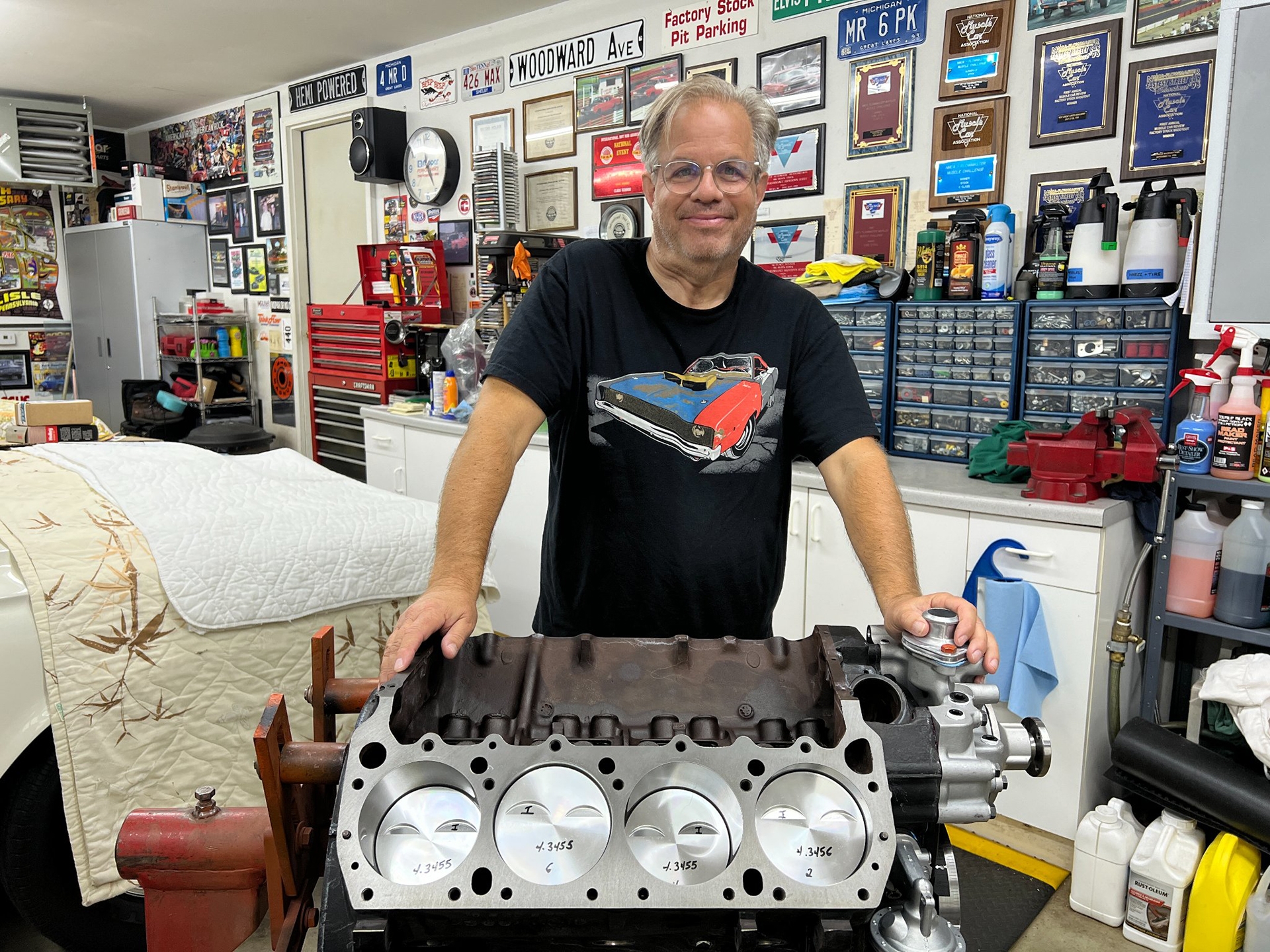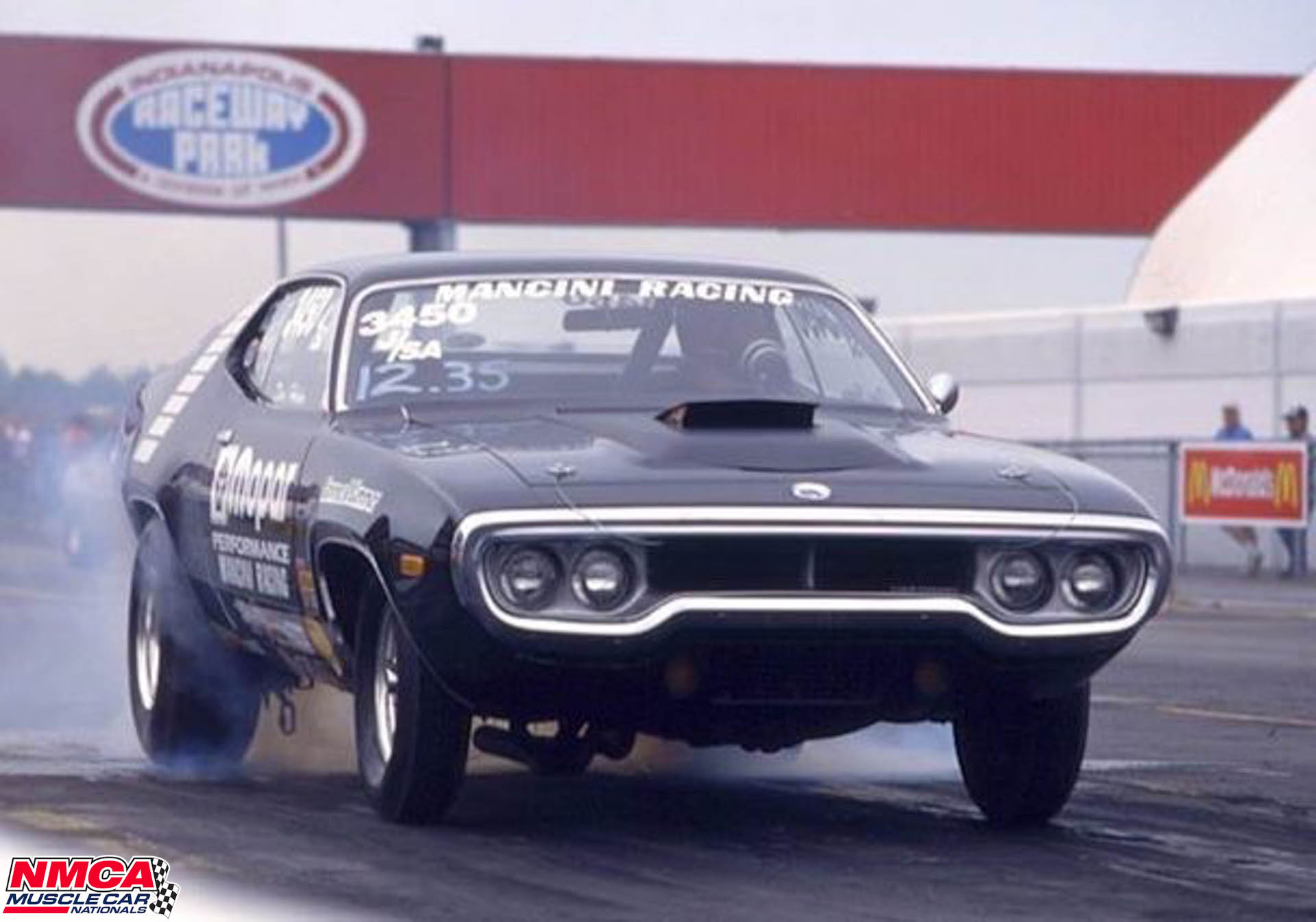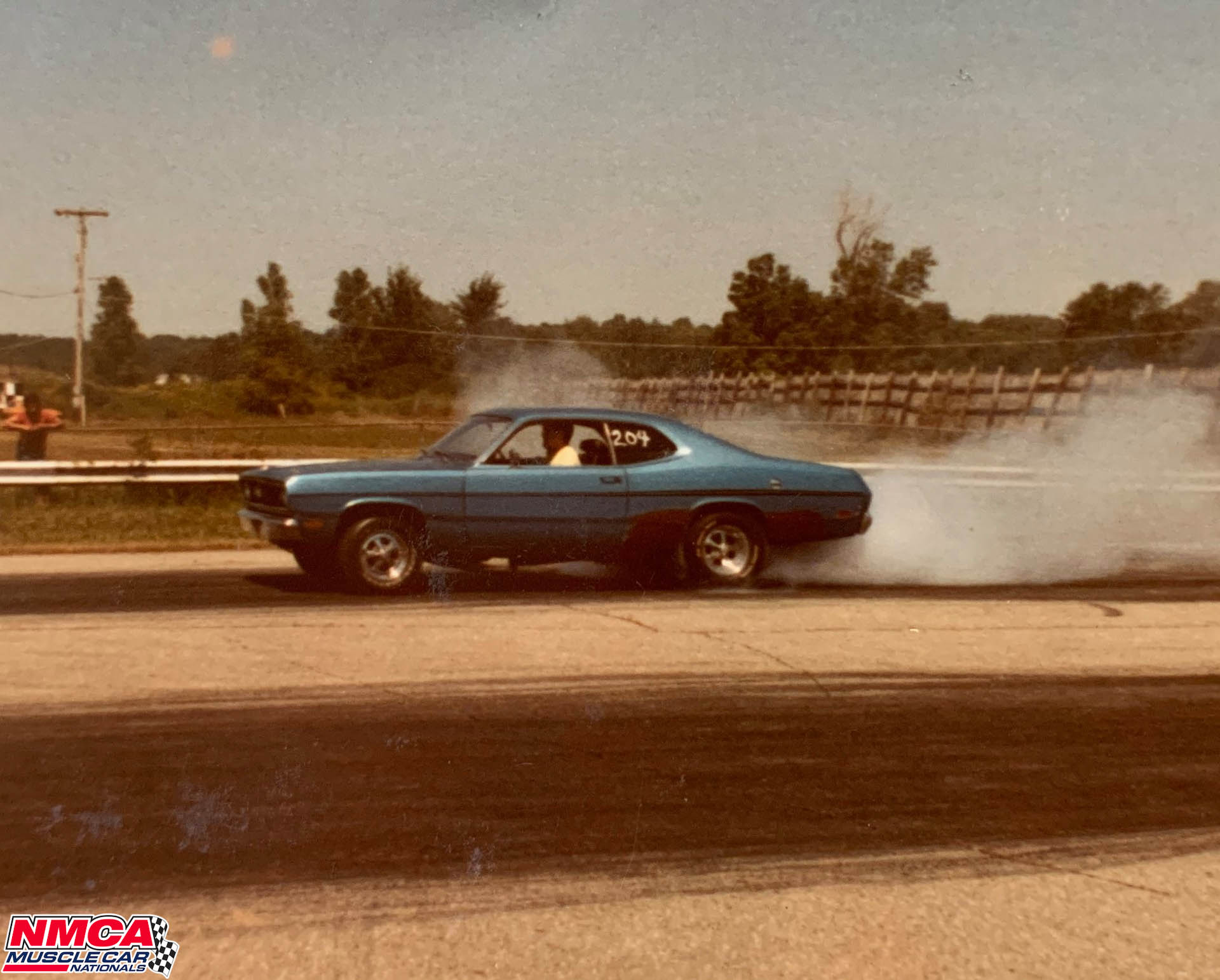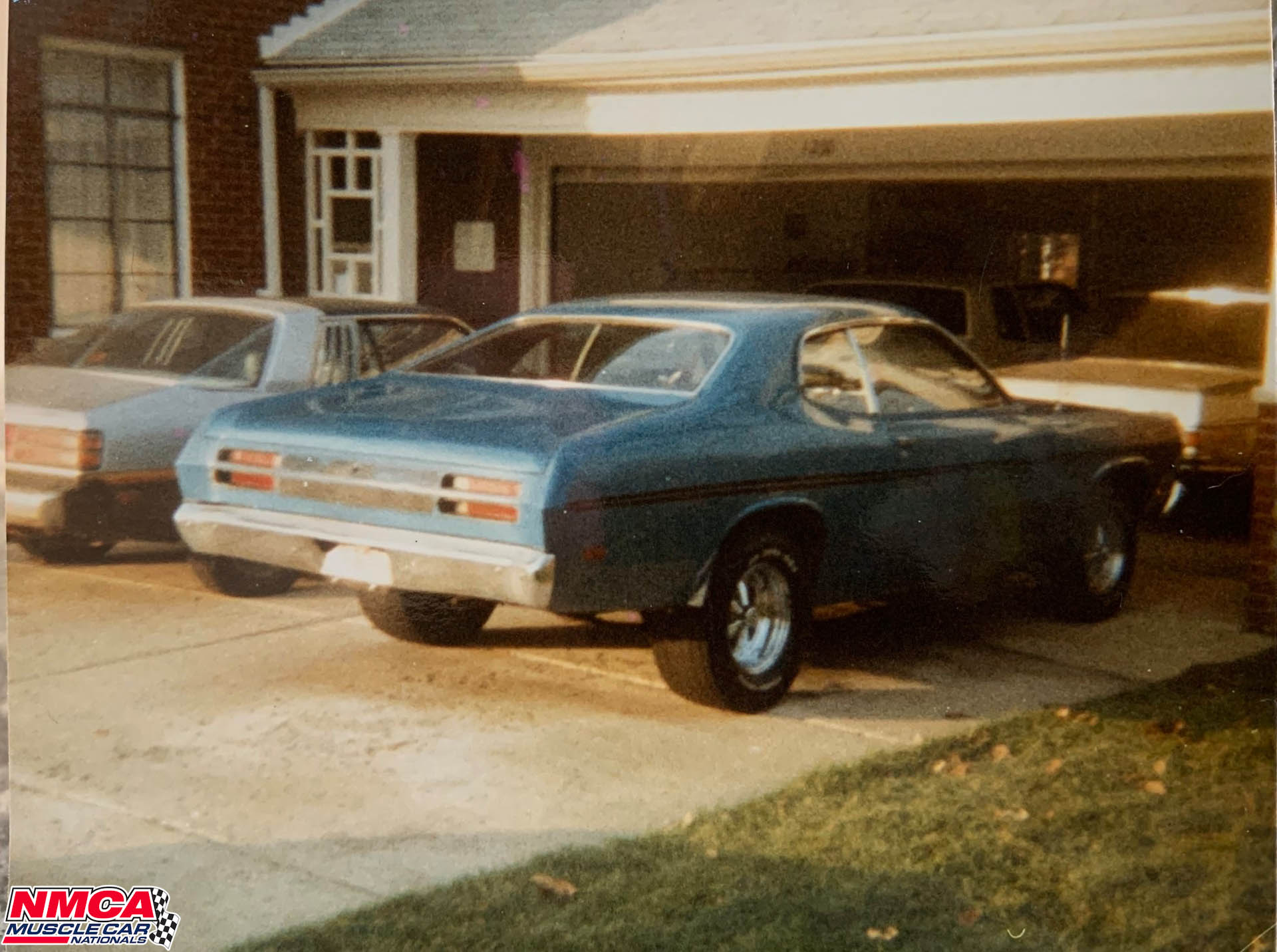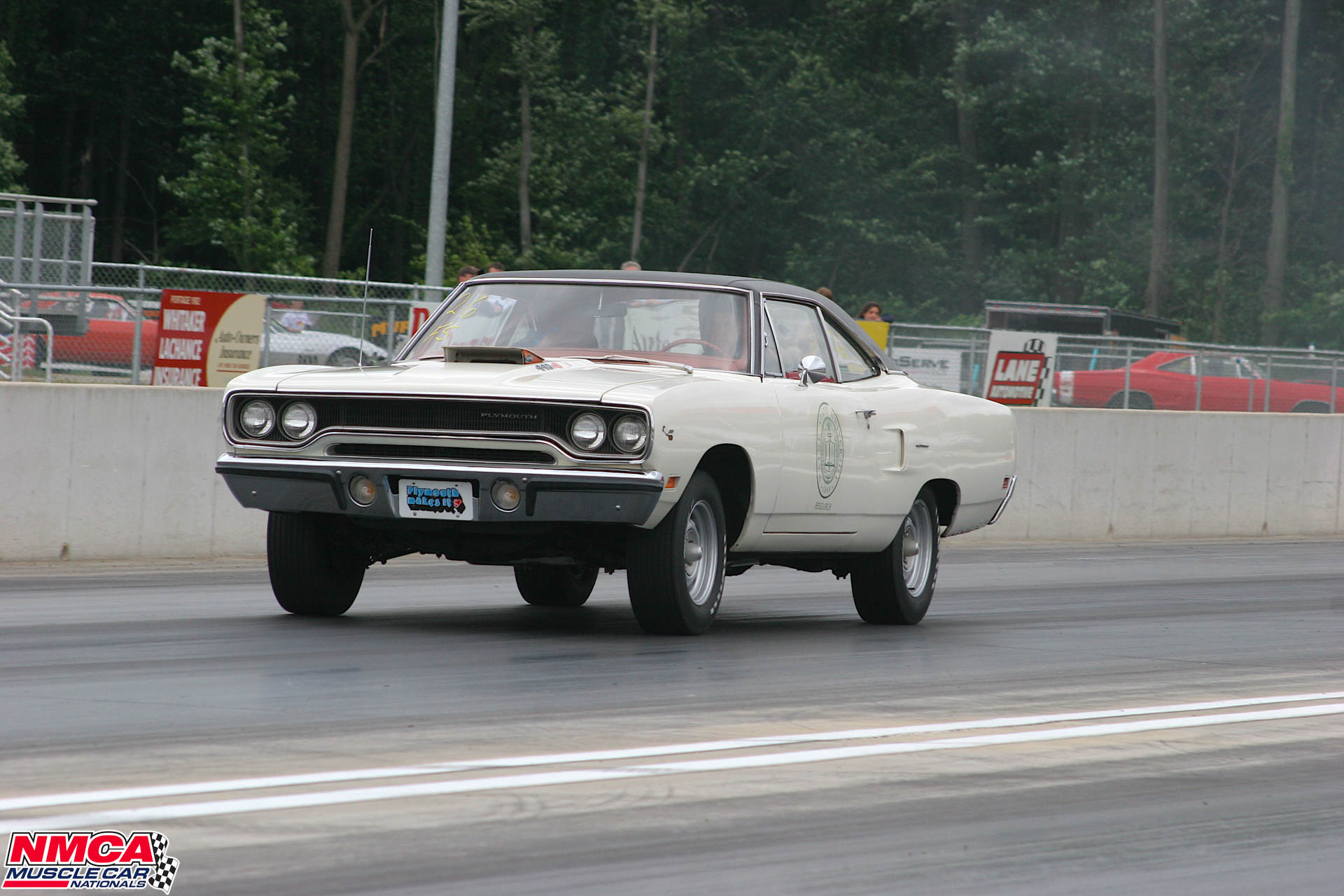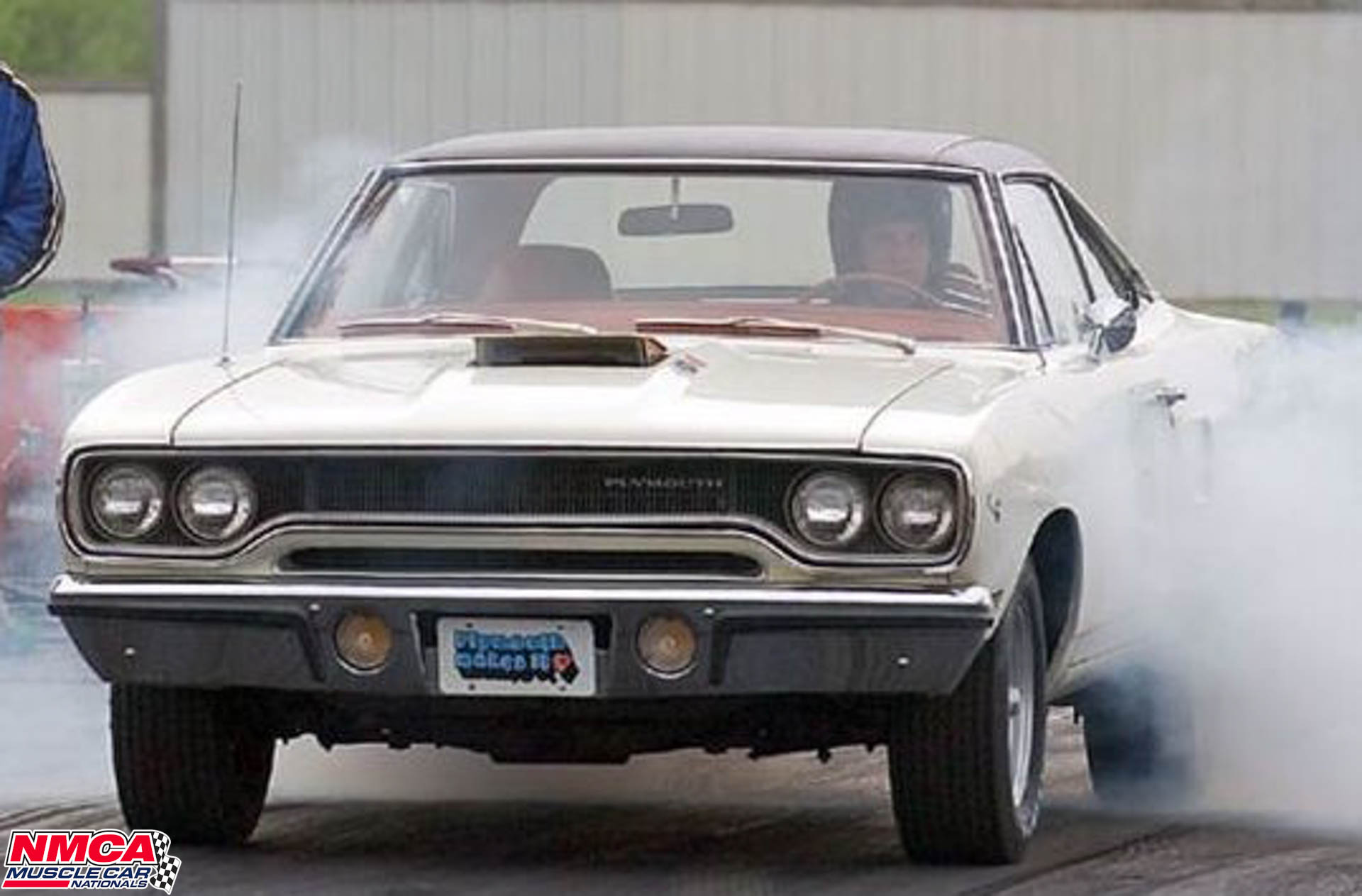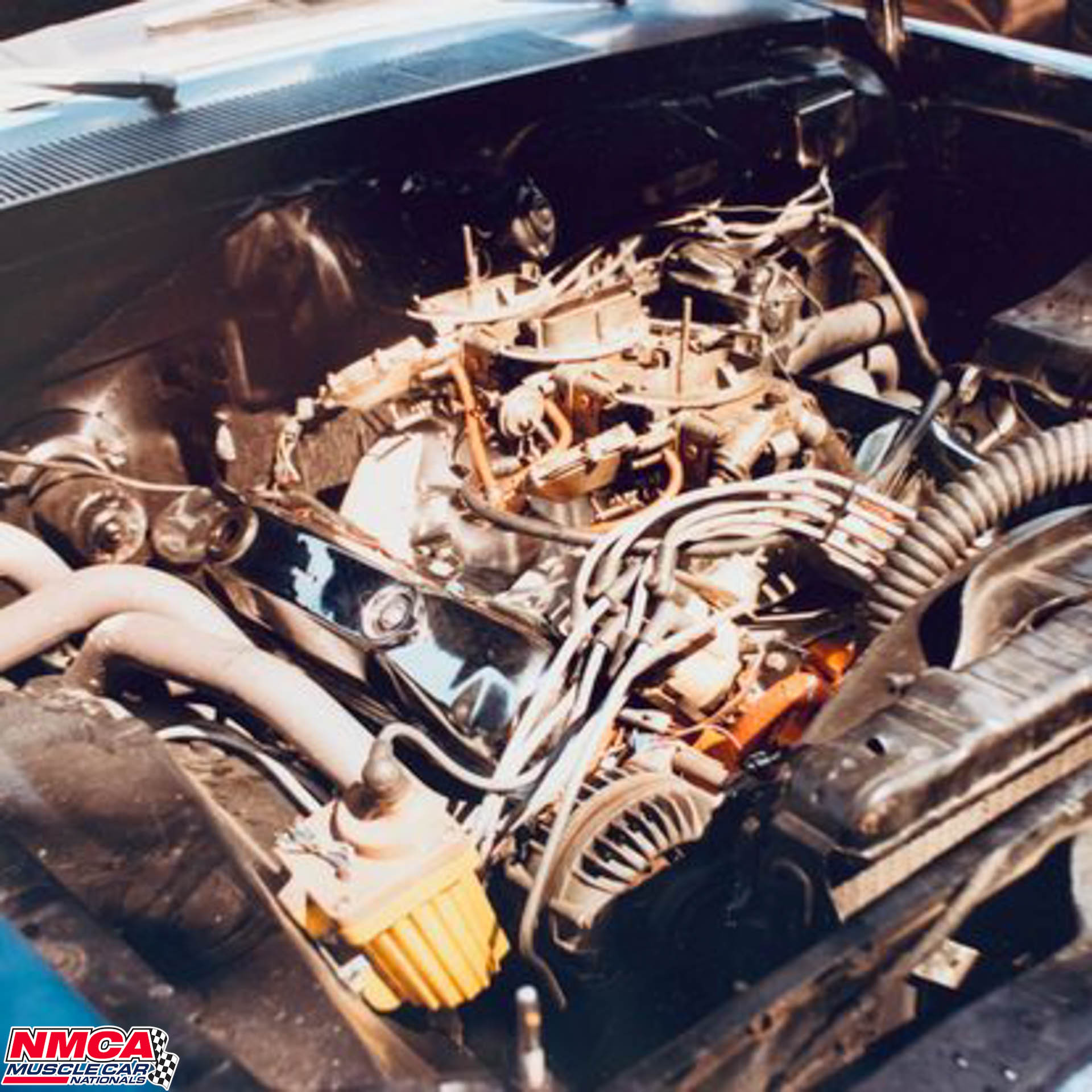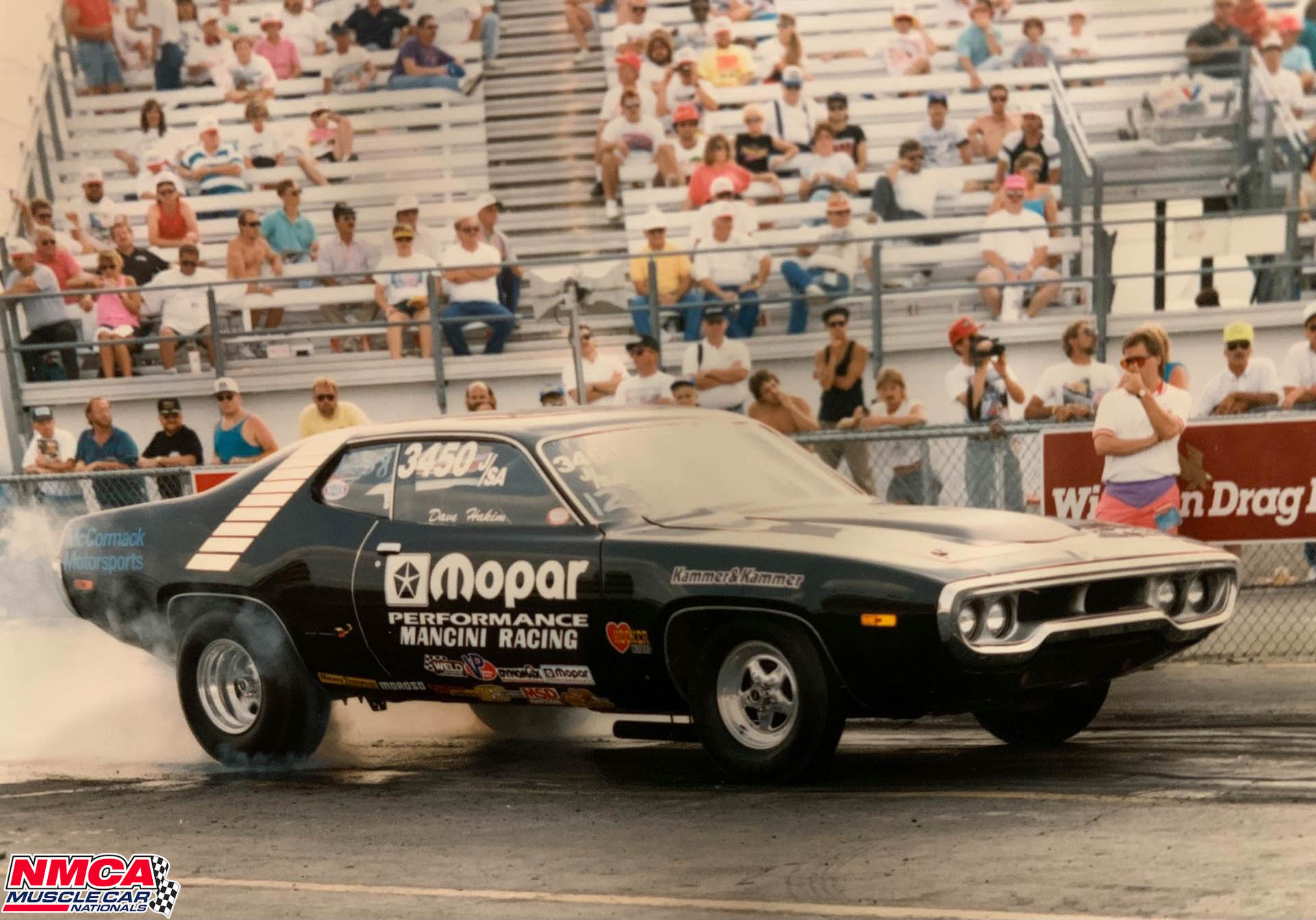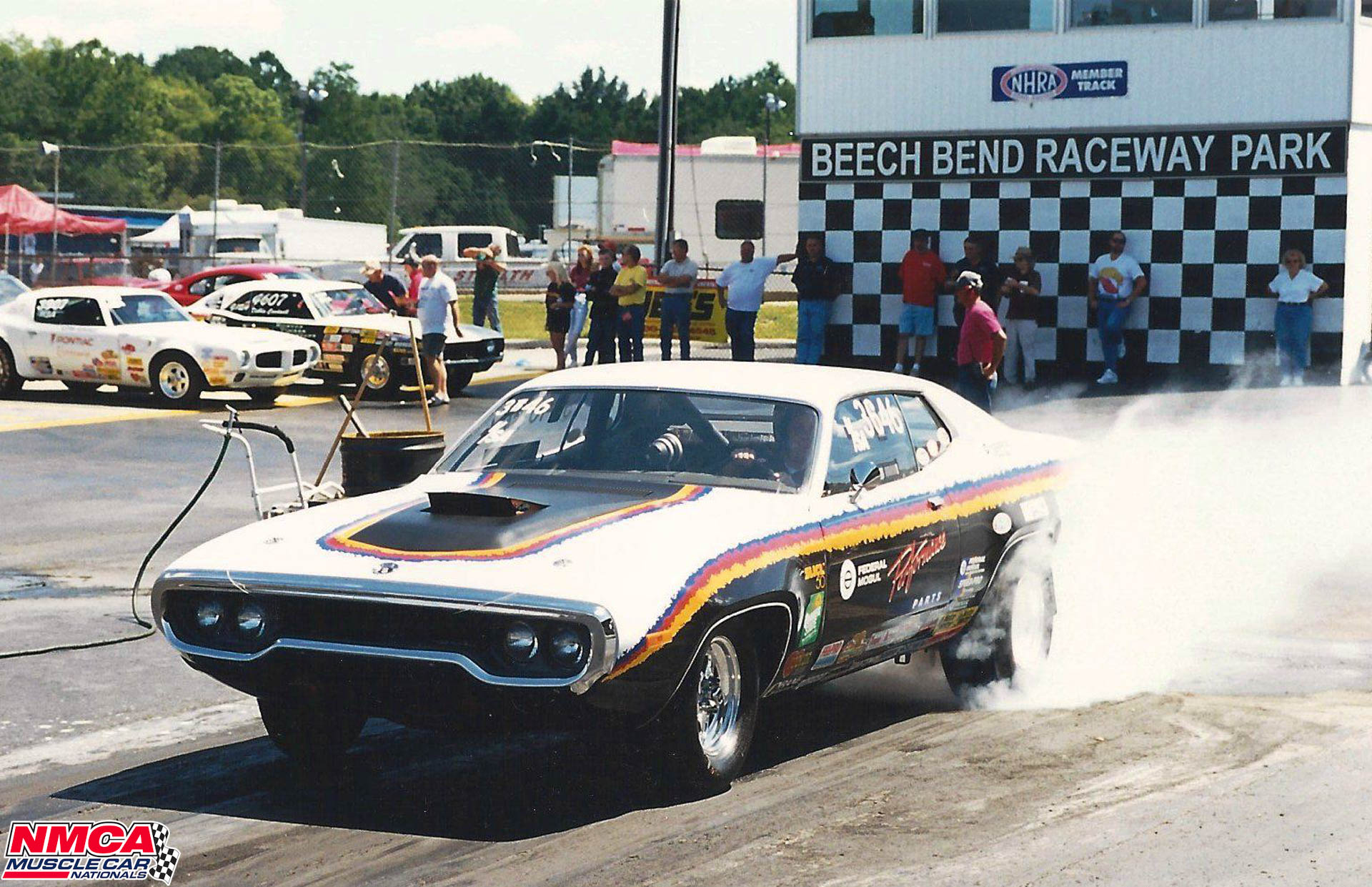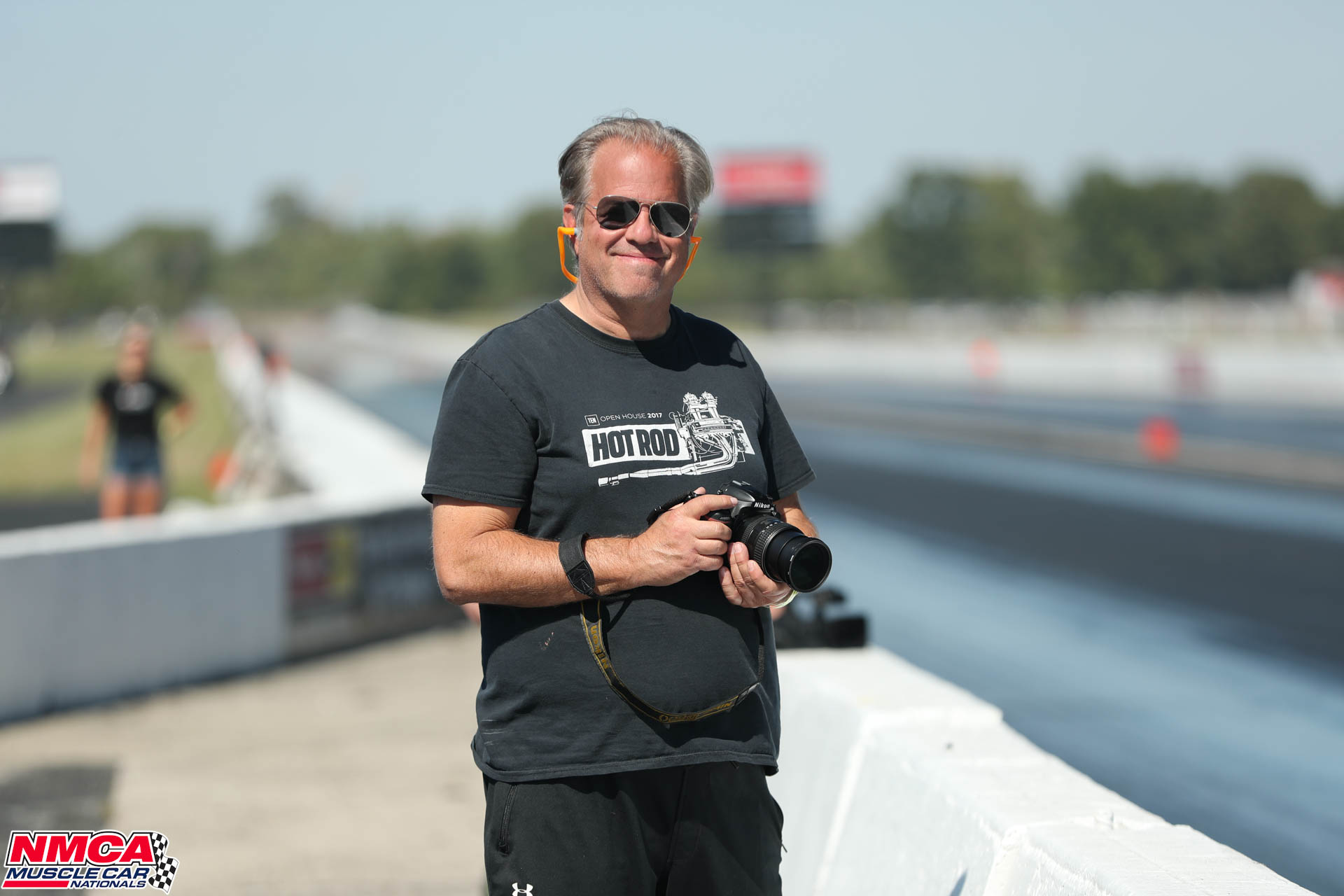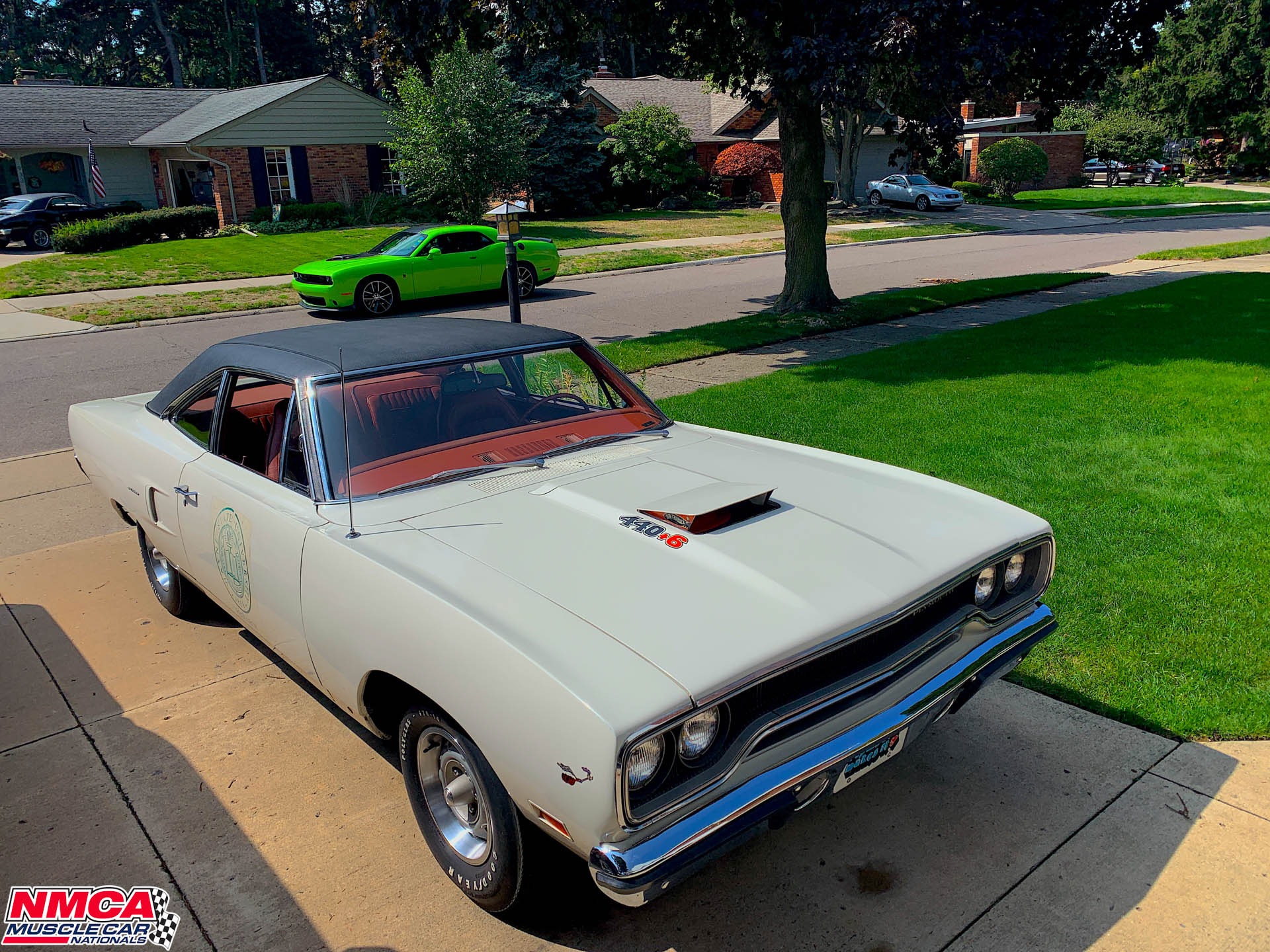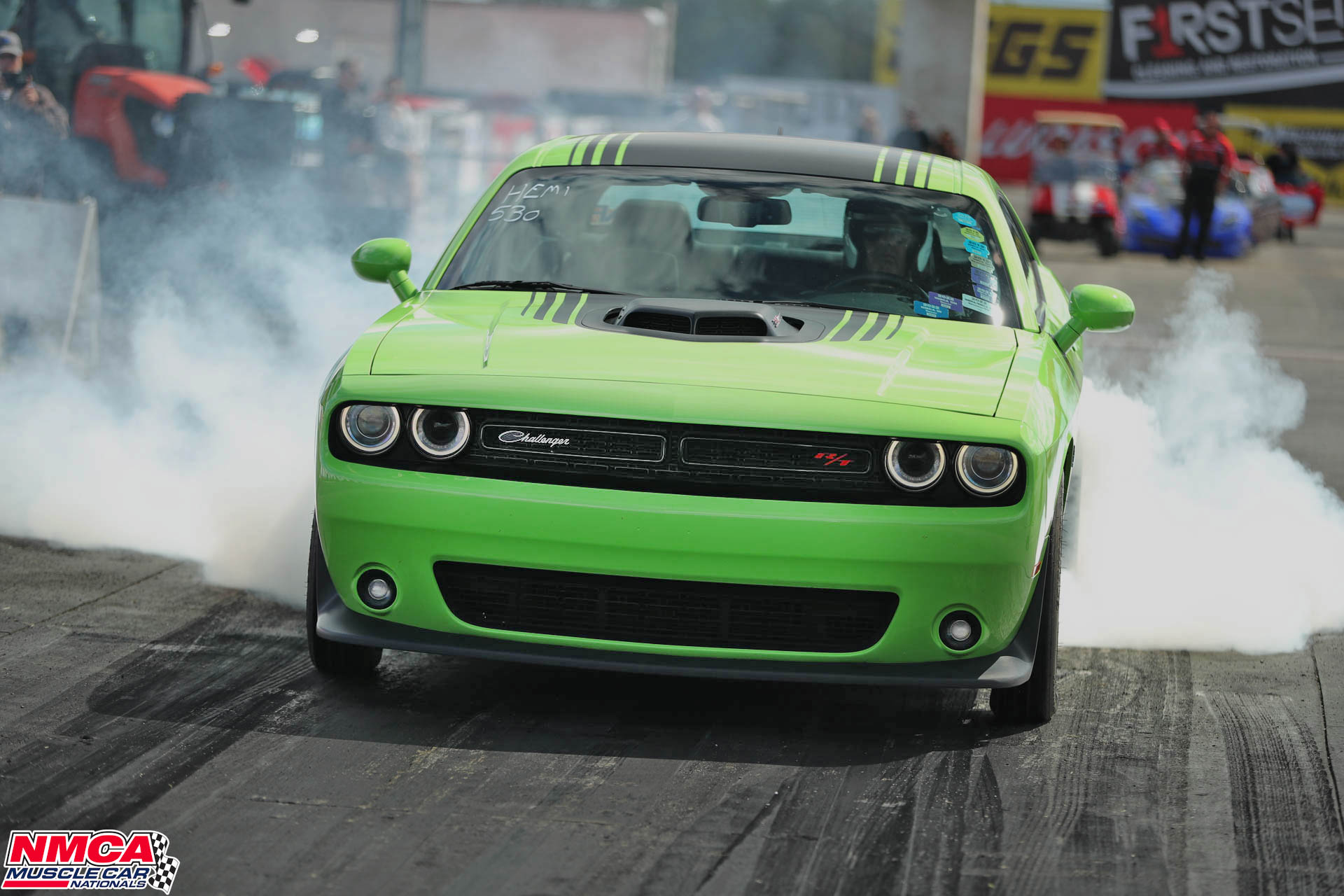CONFESSIONS OF A GRASSROOTS DRAG RACER
By David Hakim
Editors Note: David Hakim is a long-time automotive journalist, veteran racer and passionate muscle car enthusiast from Detroit who regularly attends NHRA and NMCA drag races and has had his finger on the pulse of the hobby for over four decades. He has been competing with his 2015 Challenger and will double up with his 1970 Road Runner at select NMCA events in 2023.
“Drag racing—anyone can do that. It’s just going in a straight-line,” said a competitor I was running against during the unique One Lap of America (an 8-day, cross-country event combining multiple motorsports disciplines where competitors must use the race vehicle for the road transits and no trailers of support vehicles are allowed). We race on road courses to test one’s ability to turn left and right, plus drag racing and ovals, too. It mainly appeals to the road racing/sports car crowd who sometimes don’t consider drag racing a legit form of motorsports.
After correcting this arrogant person, who looked down on quarter-mile acceleration contests, I backed up my rebuttal with many examples that do require solid driving and tuning skills needed to be successful in our sport.
This includes staging procedures, lining up in the groove, and of course, the highly critical reaction time that can either have you advancing to the next round, or loading up and heading home. You can go from hero to zero in a matter of seconds.
Drag racing is, in fact, the purest form of motorsport. Two cars go down the strip, only one comes back. It’s all or nothing, no do-overs or second chances. It’s a shootout between gunslingers and their high-horsepower weapons. So yes, ‘anyone can drag race,’ but very few can do it well. And to do anything well, it requires practice, practice, and of course, practice.
While I’ve drag raced since the 1980s, it’s been more of a ‘on again…off again’ affair of hitting the drag strip, but it’s an activity that bonds man, machine and a community of like-minded gearheads.
My first foray into drag racing goes back to the early 1980s. The machine was a homebuilt 1970 Plymouth Duster with a 440 Six Pack stuffed in it. On cruddy street tires I skated down Lapeer Drag Strip clicking off high 12s. That’s all it took, and I was hooked.
Less than a decade later, I got serious and went NHRA Stock Eliminator racing. I bought a J/SA 1972 Plymouth Road Runner. I had a single-cab Ram dually truck and open trailer. I felt bigtime emulating my Mopar racing heroes like Sox & Martin and Dick Landy. In reality, I was just low-buck racer trying to compete in a class of cubic dollars, however, it was a quick learning experience. I ramped up on all the nuances of Stocker and the tricks to make my Mopar go faster. Class rules dictated the use of production carburetors, intake manifolds, cylinder heads, and so on. The magic was something not seen by the naked eye and lay within the short-block and the heads.
So off I went, seeing how for under my index I could run this 3,750-pound Mopar B-Body, while chasing valuable grading points at NHRA Divisional Events. The goal was to enter the biggest race of the year, the U.S. Nationals at Indy.
After a few unsuccessful bids to win my class at ‘The Big Go’, the best I could muster was a Class runner-up two-years in a row. That big round ‘T’ US Nationals Class Finalist decal affixed to the front windshield was a badge honor for my efforts. But drag racing was changing right in front of me as the new 5.7L LT-1 Firebirds fell directly into my class. With a stroke of a pencil, it put my ‘ancient’ 340-powered Road Runner at a disadvantage when running these EFI GM F-Body cars in heads-up eliminations. With my money spent and a change in personal priorities, I sold my Stocker, but my love of racing never waned, and it was time to move on to the next chapter.
Enter another Road Runner, but this time a 1970 model with a ‘numbers matching’ 440 Six Barrel under the Air Grabber hood. Since this was a rare, low-mileage example of a very rare muscle car with a great deal of history, I couldn’t rightly hack it up into a full-blown race car. But my desire to drag race was stronger than ever and with some recommendations from friends, I discovered the Pure Stock Muscle Car Drags, whose rules align directly with the NMCA Factory Stock class that runs in conjunction with its big-inch stock looking siblings the F.A.S.T. class.
I had raced the ’70 Runner decades ago, but parked it due to career, family, and other factors. So last year after years of taking up space in the garage, I got serious, yanked out the original 440 and began working on a new bullet to hit the 2023 NMCA events at 131 Motorsports Park in Martin, Michigan and Summit Motorsports Park in Norwalk, Ohio. There’s an art and skill of launching these big-block machines on skinny Polyglas bias-ply tires and hopefully it’ll come back to me like riding a bike.
I also have one foot in the world of new-school drag racing with my trusty 392 HEMI powered 2015 Challenger Scat Pack that is ready for the ‘head to the lanes’ and to roll into the water box when the call goes out for the NMCA Dodge//Mopar HEMI Shootout. After racing the Challenger since 2018 at numerous NMCA races across the country, it’s been a blast, while meeting the Dodge brands true ‘Brotherhood of Muscle’ of passionate guys and gals who take their Demons, Redeyes, Hellcats, Scat Packs, and just about any other machine powered by a GEN III HEMI to the strip. The NMCA has afforded me the opportunity to now race my old-school muscle car and modern Mopar machine at the same track during the same weekend. Talk about a Mopar racer’s dream come true!
So don’t let the weeds grow under your feet or even tires this season. Get yourself and your ride out the NMCA races this season and get back in the groove!
By David Hakim
Editors Note: David Hakim is a long-time automotive journalist, veteran racer and passionate muscle car enthusiast from Detroit who regularly attends NHRA and NMCA drag races and has had his finger on the pulse of the hobby for over four decades. He has been competing with his 2015 Challenger and will double up with his 1970 Road Runner at select NMCA events in 2023.
“Drag racing—anyone can do that. It’s just going in a straight-line,” said a competitor I was running against during the unique One Lap of America (an 8-day, cross-country event combining multiple motorsports disciplines where competitors must use the race vehicle for the road transits and no trailers of support vehicles are allowed). We race on road courses to test one’s ability to turn left and right, plus drag racing and ovals, too. It mainly appeals to the road racing/sports car crowd who sometimes don’t consider drag racing a legit form of motorsports.
After correcting this arrogant person, who looked down on quarter-mile acceleration contests, I backed up my rebuttal with many examples that do require solid driving and tuning skills needed to be successful in our sport.
This includes staging procedures, lining up in the groove, and of course, the highly critical reaction time that can either have you advancing to the next round, or loading up and heading home. You can go from hero to zero in a matter of seconds.
Drag racing is, in fact, the purest form of motorsport. Two cars go down the strip, only one comes back. It’s all or nothing, no do-overs or second chances. It’s a shootout between gunslingers and their high-horsepower weapons. So yes, ‘anyone can drag race,’ but very few can do it well. And to do anything well, it requires practice, practice, and of course, practice.
While I’ve drag raced since the 1980s, it’s been more of a ‘on again…off again’ affair of hitting the drag strip, but it’s an activity that bonds man, machine and a community of like-minded gearheads.
My first foray into drag racing goes back to the early 1980s. The machine was a homebuilt 1970 Plymouth Duster with a 440 Six Pack stuffed in it. On cruddy street tires I skated down Lapeer Drag Strip clicking off high 12s. That’s all it took, and I was hooked.
Less than a decade later, I got serious and went NHRA Stock Eliminator racing. I bought a J/SA 1972 Plymouth Road Runner. I had a single-cab Ram dually truck and open trailer. I felt bigtime emulating my Mopar racing heroes like Sox & Martin and Dick Landy. In reality, I was just low-buck racer trying to compete in a class of cubic dollars, however, it was a quick learning experience. I ramped up on all the nuances of Stocker and the tricks to make my Mopar go faster. Class rules dictated the use of production carburetors, intake manifolds, cylinder heads, and so on. The magic was something not seen by the naked eye and lay within the short-block and the heads.
So off I went, seeing how for under my index I could run this 3,750-pound Mopar B-Body, while chasing valuable grading points at NHRA Divisional Events. The goal was to enter the biggest race of the year, the U.S. Nationals at Indy.
After a few unsuccessful bids to win my class at ‘The Big Go’, the best I could muster was a Class runner-up two-years in a row. That big round ‘T’ US Nationals Class Finalist decal affixed to the front windshield was a badge honor for my efforts. But drag racing was changing right in front of me as the new 5.7L LT-1 Firebirds fell directly into my class. With a stroke of a pencil, it put my ‘ancient’ 340-powered Road Runner at a disadvantage when running these EFI GM F-Body cars in heads-up eliminations. With my money spent and a change in personal priorities, I sold my Stocker, but my love of racing never waned, and it was time to move on to the next chapter.
Enter another Road Runner, but this time a 1970 model with a ‘numbers matching’ 440 Six Barrel under the Air Grabber hood. Since this was a rare, low-mileage example of a very rare muscle car with a great deal of history, I couldn’t rightly hack it up into a full-blown race car. But my desire to drag race was stronger than ever and with some recommendations from friends, I discovered the Pure Stock Muscle Car Drags, whose rules align directly with the NMCA Factory Stock class that runs in conjunction with its big-inch stock looking siblings the F.A.S.T. class.
I had raced the ’70 Runner decades ago, but parked it due to career, family, and other factors. So last year after years of taking up space in the garage, I got serious, yanked out the original 440 and began working on a new bullet to hit the 2023 NMCA events at 131 Motorsports Park in Martin, Michigan and Summit Motorsports Park in Norwalk, Ohio. There’s an art and skill of launching these big-block machines on skinny Polyglas bias-ply tires and hopefully it’ll come back to me like riding a bike.
I also have one foot in the world of new-school drag racing with my trusty 392 HEMI powered 2015 Challenger Scat Pack that is ready for the ‘head to the lanes’ and to roll into the water box when the call goes out for the NMCA Dodge//Mopar HEMI Shootout. After racing the Challenger since 2018 at numerous NMCA races across the country, it’s been a blast, while meeting the Dodge brands true ‘Brotherhood of Muscle’ of passionate guys and gals who take their Demons, Redeyes, Hellcats, Scat Packs, and just about any other machine powered by a GEN III HEMI to the strip. The NMCA has afforded me the opportunity to now race my old-school muscle car and modern Mopar machine at the same track during the same weekend. Talk about a Mopar racer’s dream come true!
So don’t let the weeds grow under your feet or even tires this season. Get yourself and your ride out the NMCA races this season and get back in the groove!



